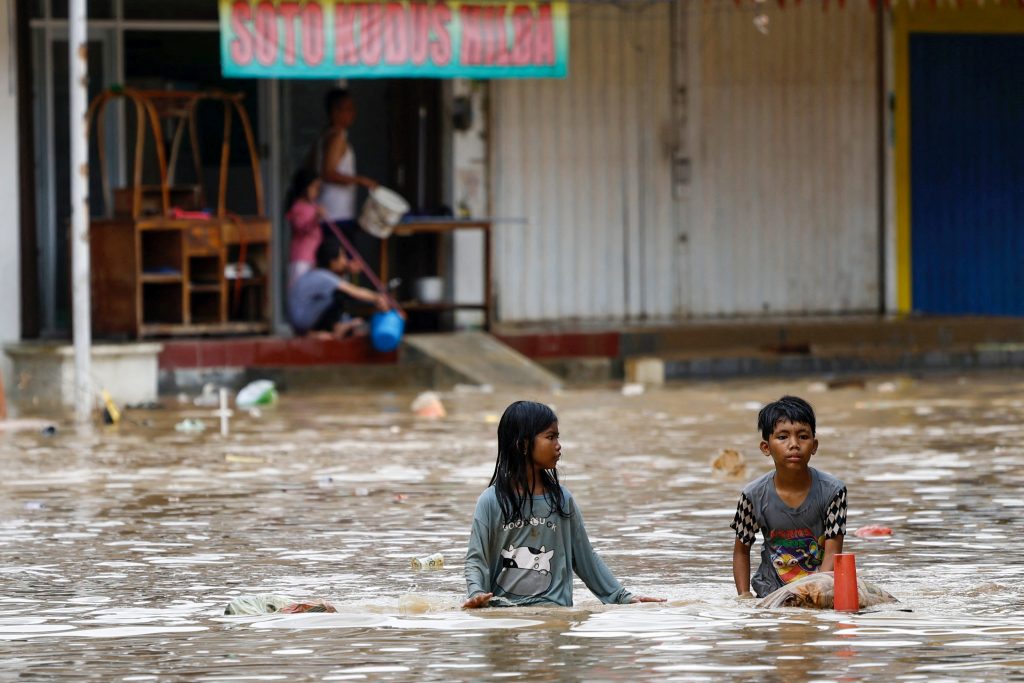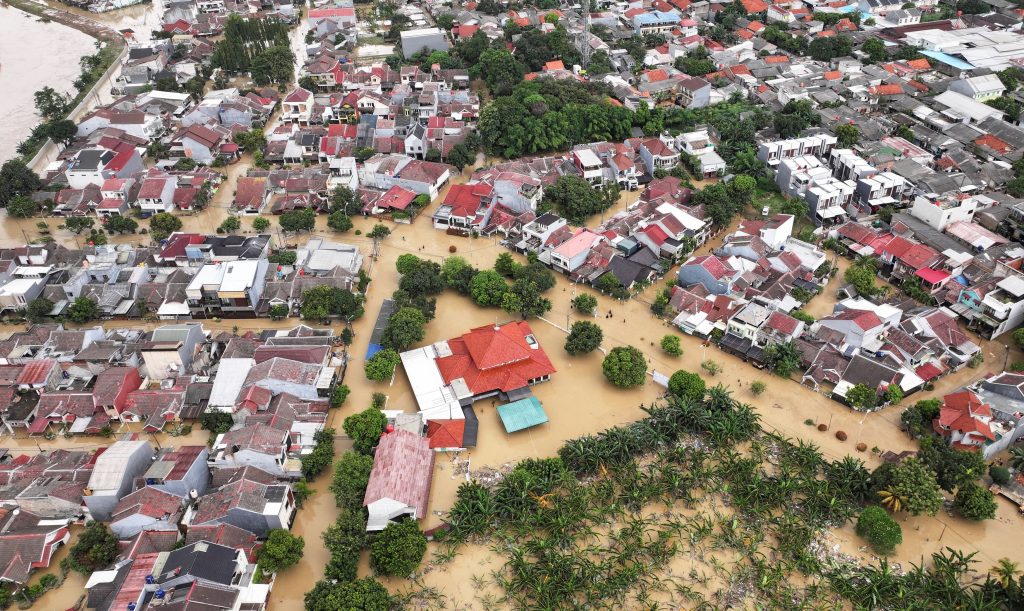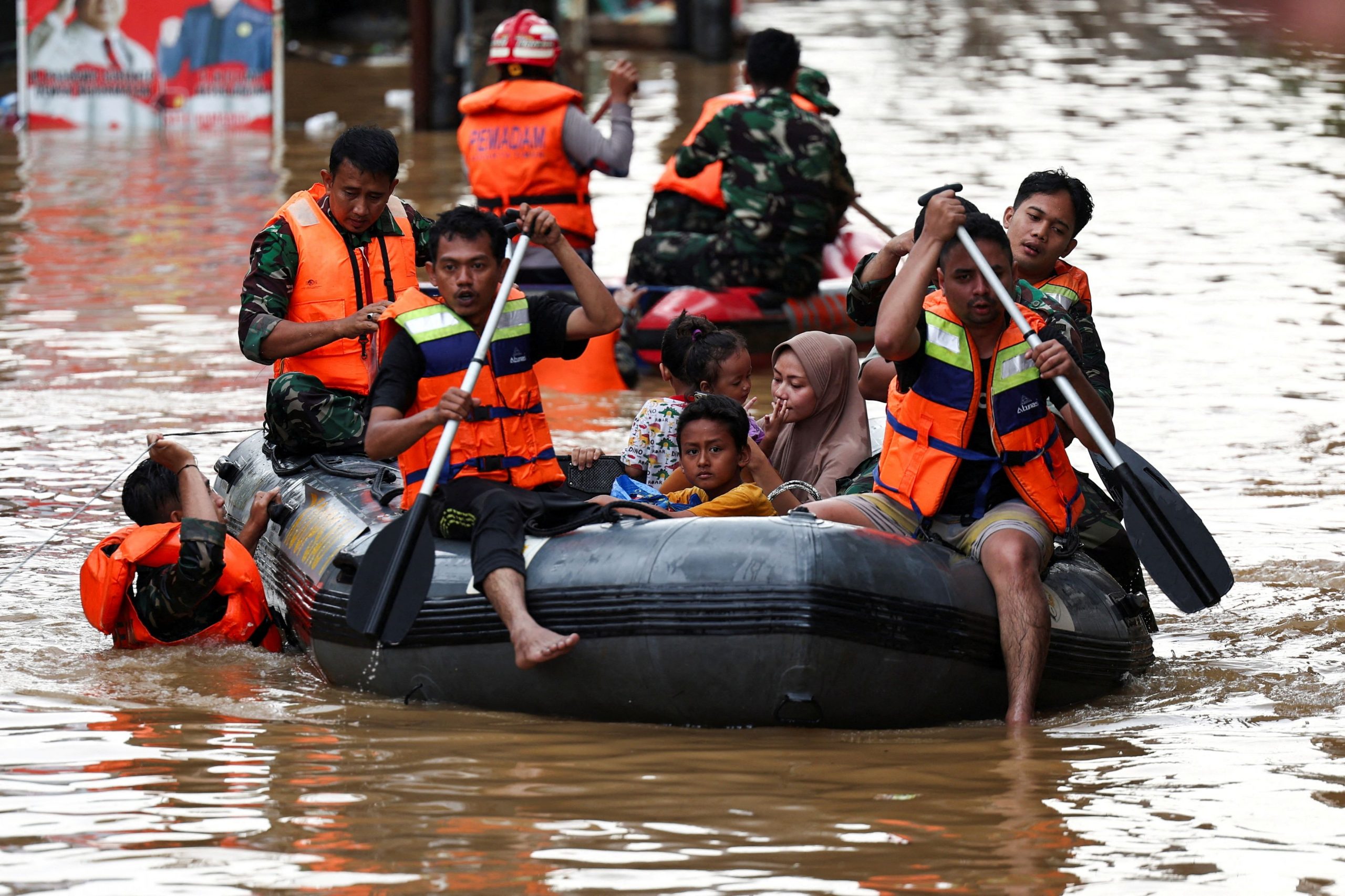Severe flooding has struck Jakarta and its surrounding regions, displacing thousands of residents and causing extensive property damage. Torrential rains that began on Monday have led to water levels rising up to 3 meters in certain areas, submerging over 1,000 homes and numerous vehicles.
According to Reuters, in response to the escalating situation, Jakarta Governor Pramono Anung raised the city’s alert status to its second-highest level. He has directed local authorities to deploy water pumps to alleviate inundated zones and to initiate weather modification strategies, such as cloud seeding, to mitigate further rainfall.

Children wade through water in a flooded residential area following heavy rains in Bekasi, on the outskirts of Jakarta, Indonesia, March 4, 2025. REUTERS/Ajeng Dinar Ulfiana TPX IMAGES OF THE DAY
The neighboring city of Bekasi has been particularly affected. Floodwaters have inundated a hospital, leading to the evacuation of patients and causing power outages in several wards. Rescue teams have been navigating the flooded streets using rubber boats to evacuate residents trapped in their homes since early morning. One resident, Sri Suyatni, 50, recounted her sudden evacuation to Reuters, stating she had no time to gather belongings before her house was completely submerged.
The Greater Jakarta metropolitan area, home to over 30 million people, is no stranger to flooding. However, current reports indicate that the severity of these floods, especially in Bekasi, is the worst since 2020, when record-breaking rainfall resulted in 60 fatalities.

A drone view shows a flooded residential area following heavy rains in Bekasi, on the outskirts of Jakarta, Indonesia, March 4, 2025. REUTERS/Yuddy Cahya Budiman
To combat the relentless rainfall, Indonesian authorities have commenced cloud seeding operations, a technique which involves shooting salt flares into clouds to induce precipitation over the ocean or less populated areas, subsequently reducing rainfall over the capital. Dwikorita Karnawati, head of Indonesia’s weather agency, emphasized the goal of diminishing rainfall intensity, acknowledging that while preventing rain entirely is impossible, its impact can be mitigated.
Authorities are closely monitoring the situation and coordinating relief efforts, including evacuations, food distribution, and emergency services.
Meteorological forecasts predict that heavy rainfall may persist until March 11, raising concerns about prolonged flooding and additional evacuations. Residents are advised to stay updated on weather developments and adhere to guidance from local authorities to ensure safety.



